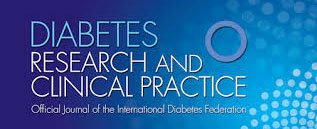Changes in mortality rates and ratios in people with pharmacologically treated type 2 diabetes mellitus between 2001 and 2016 in Hungary
György Jermendy, Zoltán Kiss, György Rokszin, Ibolya Fábián, István Wittmann, Péter Kempler
Aim
Type 2 diabetes mellitus (T2DM) is associated with a higher risk of all-cause mortality; however, detailed analyses of subgroups are rare. In this study we analyzed the changes of age- and gender-specific all-cause mortality rates and ratios in T2DM subjects (aged >40 years) in Hungary between 2001 and 2016.
Methods
We used the central database of the National Institute of Health Insurance Fund. All-cause mortality rates in patients with T2DM and ratios (T2DM/non-T2DM) were determined in males/females and in different age-groups. Age-adjusted values were used for standardized mortality rates.
Results
Among pharmacologically treated T2DM subjects we found 117,700 and 329,845 males, 232,143 and 391,382 females in 2001 and 2016, respectively. Standardized all-cause mortality rate was higher in males than females in 2001 (4540/100,000 vs. 3365/100,000) which decreased to 4125/100,000 in males (total change: -11.8%, p<0.0001) and to 2977/100,000 in females (total change: -9.2%; p=0.0558) in 2016. We found a significant increase (8.35%; p=0.0272) in standardized all-cause mortality ratios in our cohort between 2001 and 2016 which was higher in males (11.44%; p=0.0096) than females (2.78%; p=0.3288). We observed the most pronounced increase in younger age-groups (age 41-60 years) in both genders (change varied from 54.2% to 101.8%; p<0.05) which was due to distinct tendencies in changes of mortality curves.
Conclusions
Pharmacologically treated T2DM subjects in lower age-groups (41-60 years) had the highest increase in all-cause mortality ratios between 2001 and 2016 in Hungary. These data indicate that relatively younger patients with T2DM need special attention for improving long-term outcomes.

